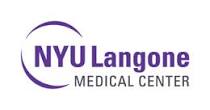Protective HA Factors
| Status: | Withdrawn |
|---|---|
| Conditions: | Migraine Headaches, Neurology |
| Therapuetic Areas: | Neurology |
| Healthy: | No |
| Age Range: | 18 - 65 |
| Updated: | 12/8/2018 |
| Start Date: | March 2016 |
| End Date: | April 2018 |
Protective Headache Factors for Migraineurs and Postconcussive Headache Patients: Are Behavioral Strategies Effective? A Naturalistic Study
This is a naturalistic study of 100 migraineurs and 75 post concussive headache patients who
will be asked to record their headaches, medications, sleep and other behaviors in a
smartphone app called Curelator. The software was developed to identify possible headache
triggers. We seek to determine whether there might be protective headache factors. Patients
will be given audio files with relaxation therapies. We seek to understand whether this self
relaxation therapy and/or traditional evidence based behavioral treatment recommended during
a patient visit is protective against migraine attacks.
will be asked to record their headaches, medications, sleep and other behaviors in a
smartphone app called Curelator. The software was developed to identify possible headache
triggers. We seek to determine whether there might be protective headache factors. Patients
will be given audio files with relaxation therapies. We seek to understand whether this self
relaxation therapy and/or traditional evidence based behavioral treatment recommended during
a patient visit is protective against migraine attacks.
Patients will be given a link to audio files on dropbox which they can download onto their
smartphone. They consist of breathing techniques, imaging, progressive relaxation, and more.
Patients will be asked to perform 20 minutes of relaxation therapy at least 3 times a week.
Patients will record their headache frequency and intensity, in addition to other symptoms,
and the frequency of practicing the behavioral therapy using Curelator Headache. ™ Curelator
Inc. (Cambridge USA) has developed a proprietary, non-pharmaceutical, digital platform,
called Curelator Headache,™ to collect daily data, identify trigger-attack associations and
propose 'tests' of trigger modification.
The Curelator approach requires high quality data from the individual, entered on a daily
basis. Compliance is expected to be enhanced because the study if being offered by the
individual's healthcare provider.
This a pilot study of an initial 90 days use of a digital platform to identify potential
migraine protective factors (Curelator Headache™) in subjects with physician-diagnosed
episodic or chronic migraine or post-concussive headache. Subjects are recruited to Curelator
Headache use by a physician and enter data each day. The baseline period (90 days) is
followed by a test period (90 days) during which, under Curelator guidance, subjects make one
or more modifications to their behaviors based on the data from the 90 day period.
The study will include up to 100 patients with chronic or episodic migraine and 75 patients
with postconcussive headache. At clinics, investigators will offer participation to
consecutive migraine patients with 6-20 headache days a month and to consecutive concussion
patients complaining of headache more than 1 month post concussive event.
smartphone. They consist of breathing techniques, imaging, progressive relaxation, and more.
Patients will be asked to perform 20 minutes of relaxation therapy at least 3 times a week.
Patients will record their headache frequency and intensity, in addition to other symptoms,
and the frequency of practicing the behavioral therapy using Curelator Headache. ™ Curelator
Inc. (Cambridge USA) has developed a proprietary, non-pharmaceutical, digital platform,
called Curelator Headache,™ to collect daily data, identify trigger-attack associations and
propose 'tests' of trigger modification.
The Curelator approach requires high quality data from the individual, entered on a daily
basis. Compliance is expected to be enhanced because the study if being offered by the
individual's healthcare provider.
This a pilot study of an initial 90 days use of a digital platform to identify potential
migraine protective factors (Curelator Headache™) in subjects with physician-diagnosed
episodic or chronic migraine or post-concussive headache. Subjects are recruited to Curelator
Headache use by a physician and enter data each day. The baseline period (90 days) is
followed by a test period (90 days) during which, under Curelator guidance, subjects make one
or more modifications to their behaviors based on the data from the 90 day period.
The study will include up to 100 patients with chronic or episodic migraine and 75 patients
with postconcussive headache. At clinics, investigators will offer participation to
consecutive migraine patients with 6-20 headache days a month and to consecutive concussion
patients complaining of headache more than 1 month post concussive event.
Inclusion Criteria:
- Male or female reporting at least 6 month history of episodic or chronic migraine with
6-20 headache days a month
- Age: 18-65 years
- Age of onset of migraine was
- Able to give informed consent/assent
- Sufficiently fluent in English to be able to use the English language version of
Curelator Headache (no translations available).
- Has ownership of or reliable access to iPhone or (mini) iPad running iOS 7 or higher
- Able to give written informed consent (adults), or, for adolescents, has a
parent/caregiver who can give informed consent and adolescent is able to give assent.
- Willing to use Curelator Headache for at least 3 months and to comply with study
procedures.
- In the Investigator's opinion, there is no reason to believe that Curelator Headache
use would pose any risk to the patient.
Exclusion Criteria:
We found this trial at
1
site
550 1st Ave
New York, New York 10016
New York, New York 10016
(212) 263-7300

Principal Investigator: Mia Minen, MD
New York University Langone Medical Center NYU NYU Langone Medical Center, a world-class, patient-centered, integrated,...
Click here to add this to my saved trials